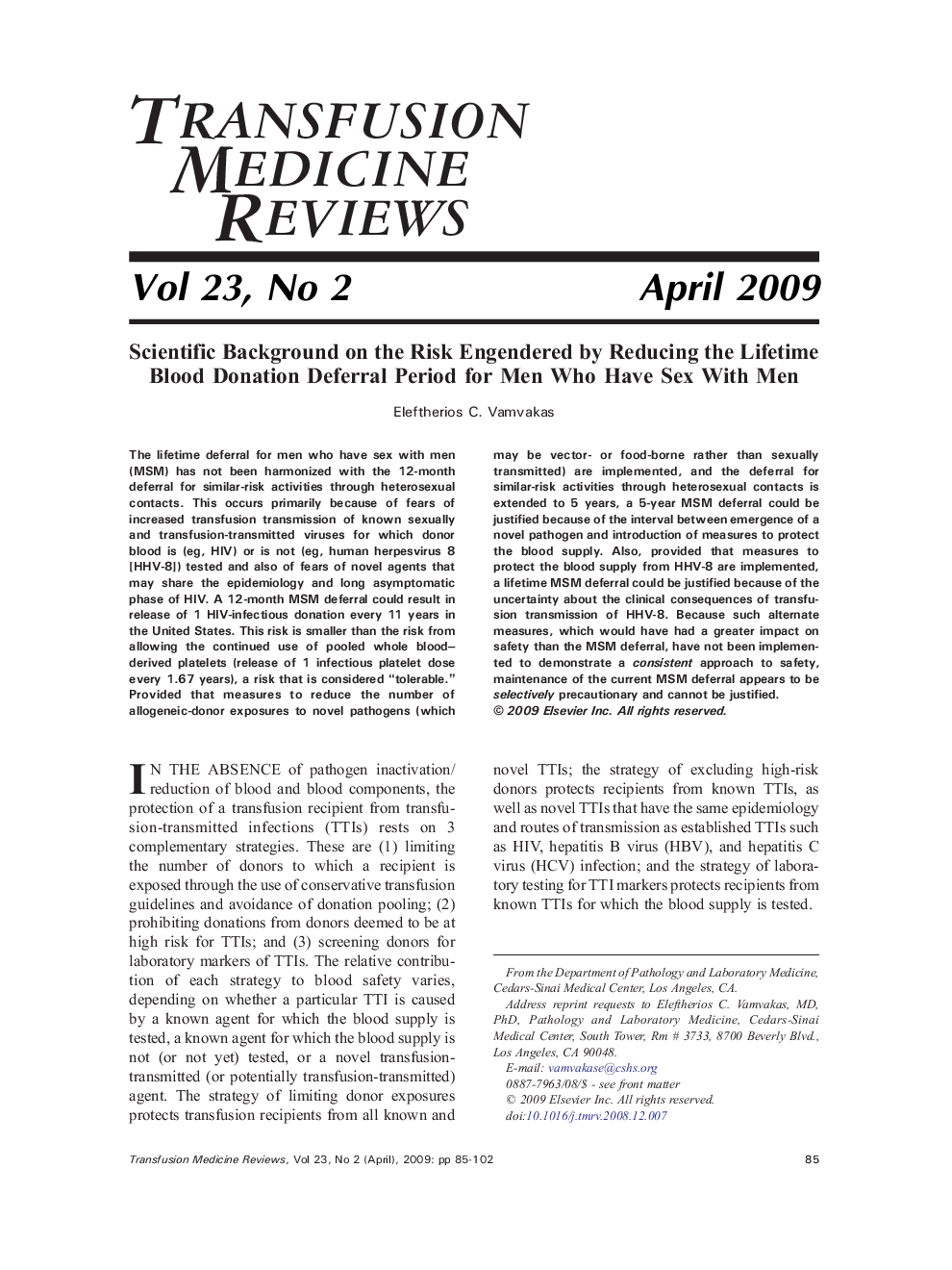| Article ID | Journal | Published Year | Pages | File Type |
|---|---|---|---|---|
| 3337071 | Transfusion Medicine Reviews | 2009 | 18 Pages |
The lifetime deferral for men who have sex with men (MSM) has not been harmonized with the 12-month deferral for similar-risk activities through heterosexual contacts. This occurs primarily because of fears of increased transfusion transmission of known sexually and transfusion-transmitted viruses for which donor blood is (eg, HIV) or is not (eg, human herpesvirus 8 [HHV-8]) tested and also of fears of novel agents that may share the epidemiology and long asymptomatic phase of HIV. A 12-month MSM deferral could result in release of 1 HIV-infectious donation every 11 years in the United States. This risk is smaller than the risk from allowing the continued use of pooled whole blood–derived platelets (release of 1 infectious platelet dose every 1.67 years), a risk that is considered “tolerable.” Provided that measures to reduce the number of allogeneic-donor exposures to novel pathogens (which may be vector- or food-borne rather than sexually transmitted) are implemented, and the deferral for similar-risk activities through heterosexual contacts is extended to 5 years, a 5-year MSM deferral could be justified because of the interval between emergence of a novel pathogen and introduction of measures to protect the blood supply. Also, provided that measures to protect the blood supply from HHV-8 are implemented, a lifetime MSM deferral could be justified because of the uncertainty about the clinical consequences of transfusion transmission of HHV-8. Because such alternate measures, which would have had a greater impact on safety than the MSM deferral, have not been implemented to demonstrate a consistent approach to safety, maintenance of the current MSM deferral appears to be selectively precautionary and cannot be justified.
